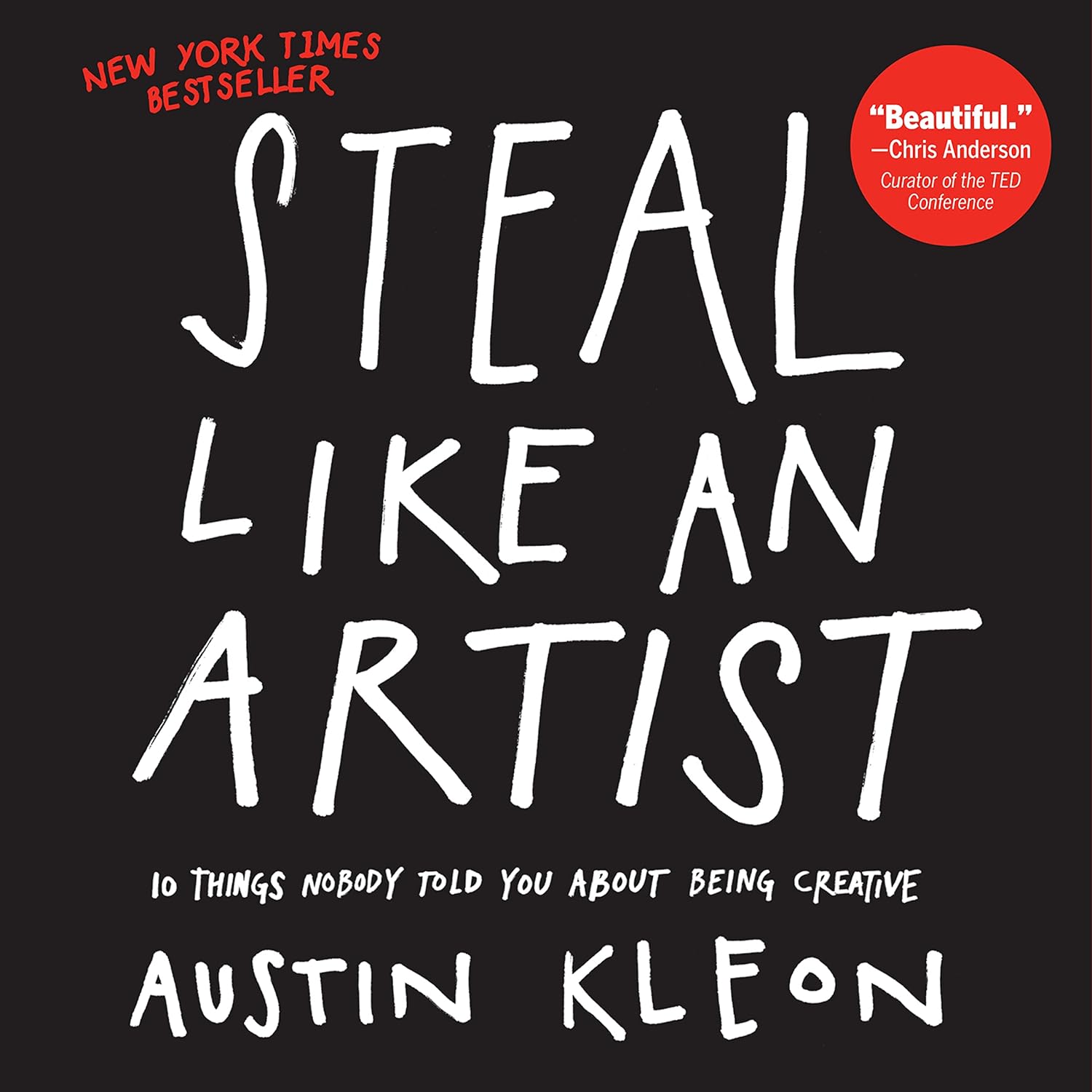
Steal Like an Artist
Creativity has a mythology around it, a belief that great ideas strike like lightning, gifted only to a lucky few. Steal Like an Artist by Austin Kleon tears that myth apart, replacing it with a much more practical—and liberating—truth: creativity isn’t about originality, it’s about remixing, borrowing, and transforming what already exists. Kleon makes the case that no artist, writer, musician, or creator of any kind operates in a vacuum. Every idea is influenced by something that came before, and instead of fearing that, we should embrace it.
The title itself is a bit of a provocation. Kleon isn’t advocating for plagiarism but for the idea that “stealing” in a creative sense means absorbing the work of others, studying it deeply, and using it as a foundation to create something new. Every great artist, from Picasso to The Beatles, has borrowed from those who came before them. The trick isn’t to copy blindly but to steal with purpose—to take inspiration and make it your own. He encourages creatives to build their own “artistic family tree,” tracing the lineage of their influences and using that knowledge to refine their own unique voice. If you love a certain writer, filmmaker, or musician, don’t just admire their work—study who they were influenced by, follow that trail, and let it shape your own development.
One of the book’s biggest takeaways is that waiting for inspiration is a waste of time. Kleon argues that creativity isn’t about sitting around waiting for a genius idea to arrive—it’s about showing up every day and doing the work. He pushes against the notion that artists need to be tortured or struck by divine inspiration, instead advocating for a more blue-collar approach: work with what you have, start before you’re ready, and trust that creativity happens through action, not contemplation.
Kleon also dismantles the fear of not being original enough. Too many people hold themselves back because they believe their ideas aren’t groundbreaking or new. But the truth, he points out, is that nothing is truly original. Every book is built on the books that came before it, every song has echoes of previous music, and every painting is part of a conversation stretching back centuries. The goal isn’t to be completely original—it’s to take existing ideas and filter them through your own perspective, creating something fresh in the process.
Another key idea in the book is the power of constraints. Instead of seeing limitations—whether they’re financial, time-related, or skill-based—as obstacles, Kleon suggests embracing them as creative fuel. Some of the most innovative work comes not from unlimited resources, but from necessity. A lack of money, time, or tools forces creativity in unexpected ways, and instead of waiting for the perfect conditions, Kleon urges creators to start with what they have and make the most of it.
The book is also a reminder that creativity isn’t limited to traditional art forms. Whether you’re a writer, designer, entrepreneur, or just someone trying to think differently about your work, the principles of creativity apply everywhere. The way you approach problems, the way you combine ideas, and the way you express yourself are all forms of creative work. The key is to stay curious, keep learning, and most importantly, keep making things—no matter how imperfect they might feel at first.
What makes Steal Like an Artist so refreshing is that it strips creativity of its mystique and gives it back to the people. You don’t need permission to create, and you don’t need to be a genius to make something worthwhile. The book encourages readers to build on what inspires them, embrace their influences without shame, and most importantly, start making things now rather than waiting for the perfect moment. Creativity, as Kleon reminds us, isn’t about having a completely original idea—it’s about taking the ideas around you, reshaping them through your own lens, and putting something new into the world.